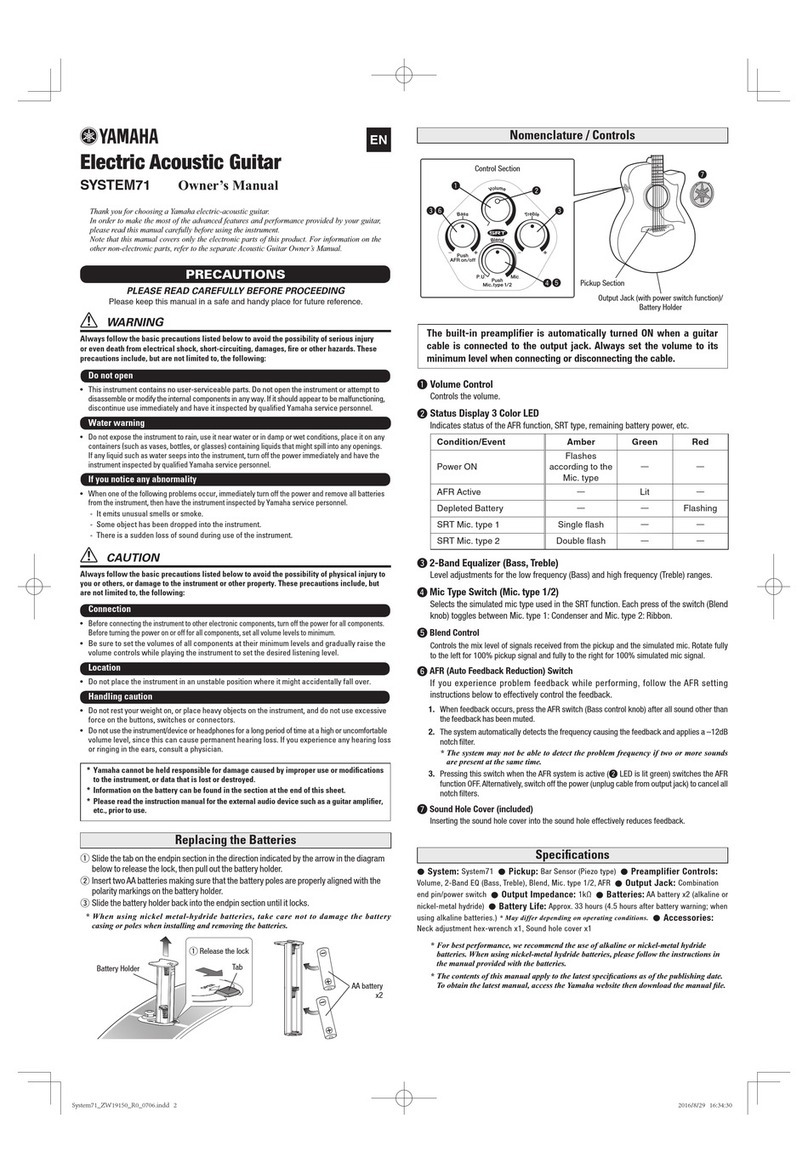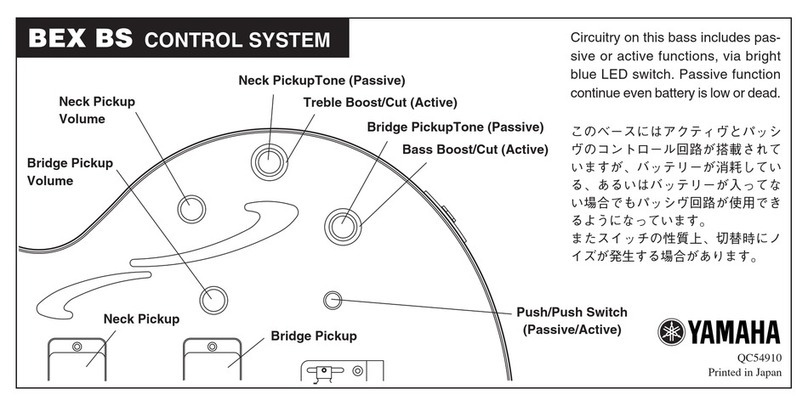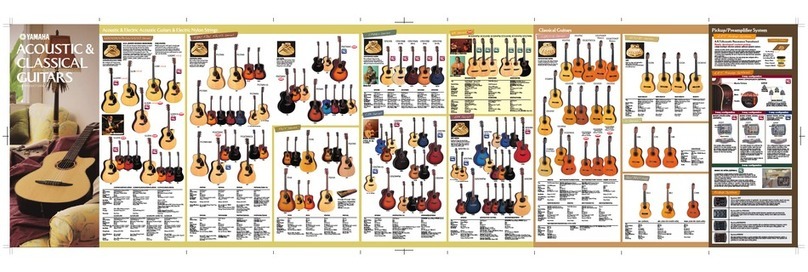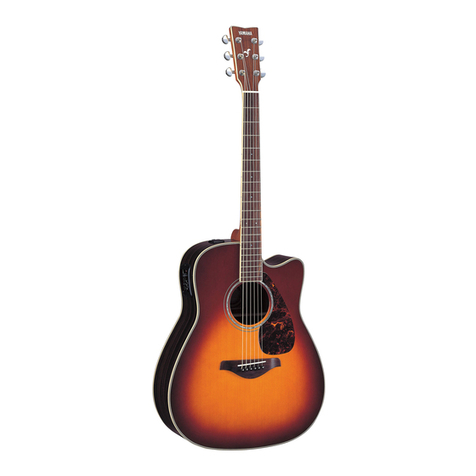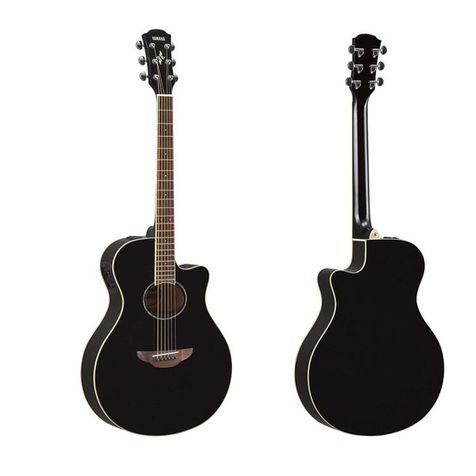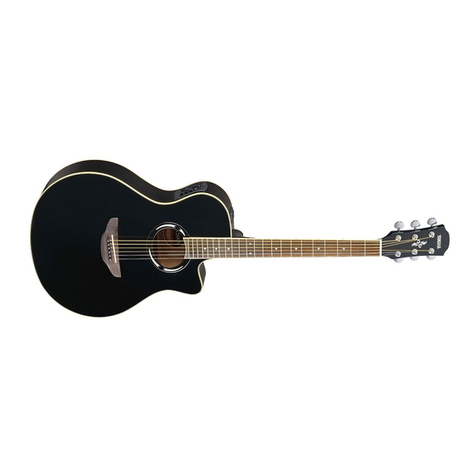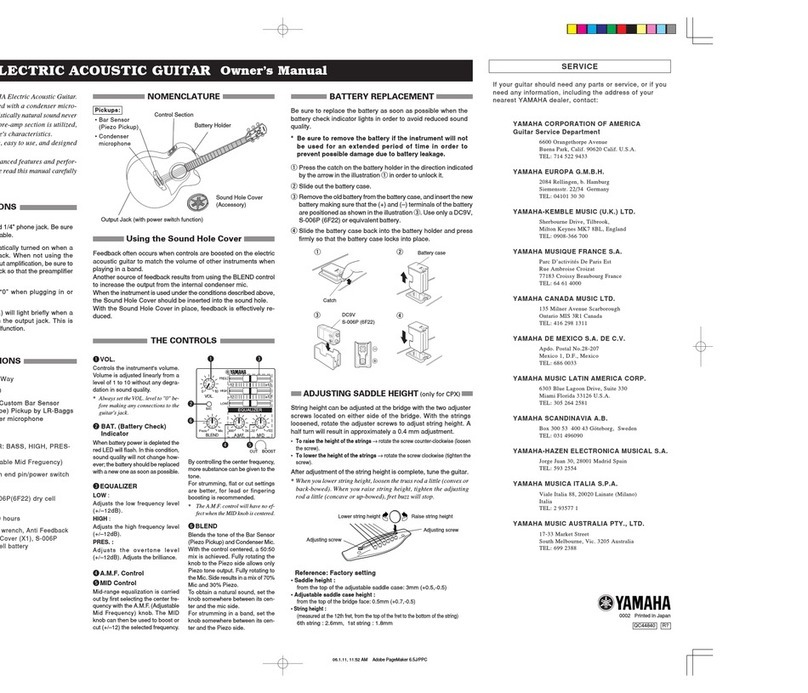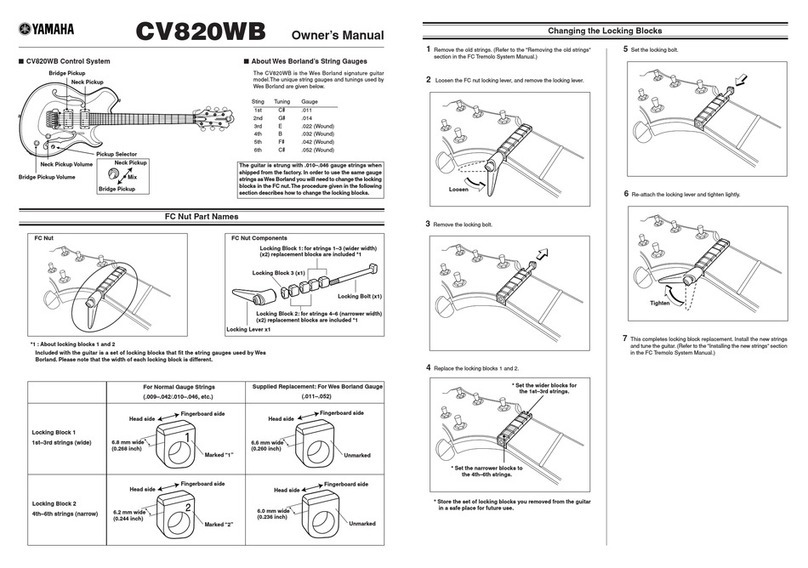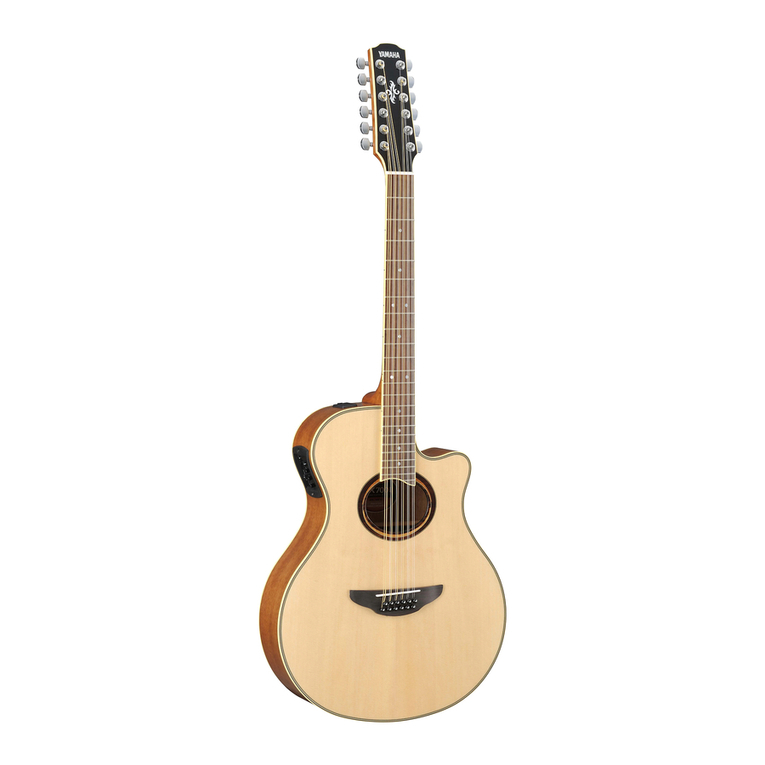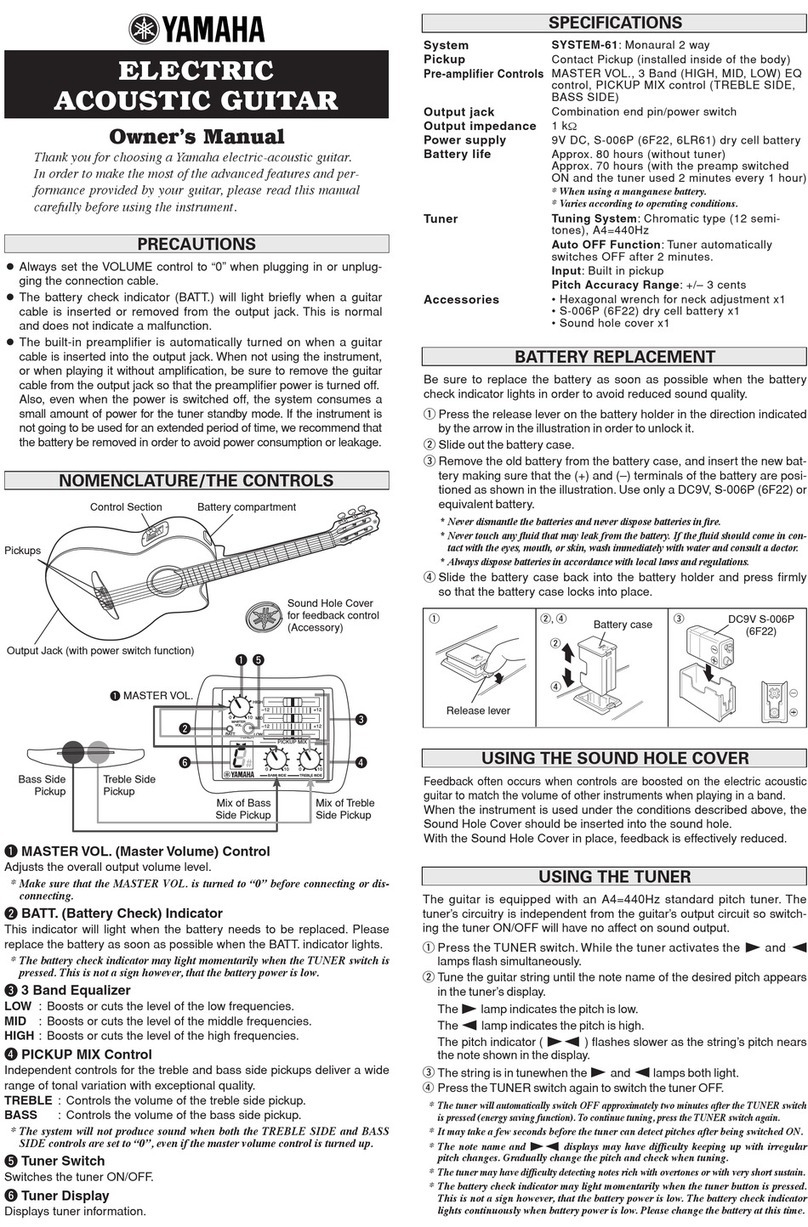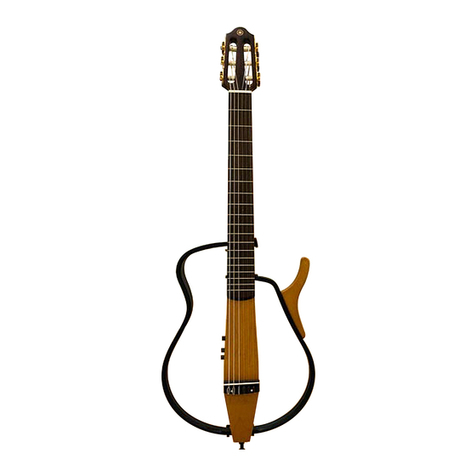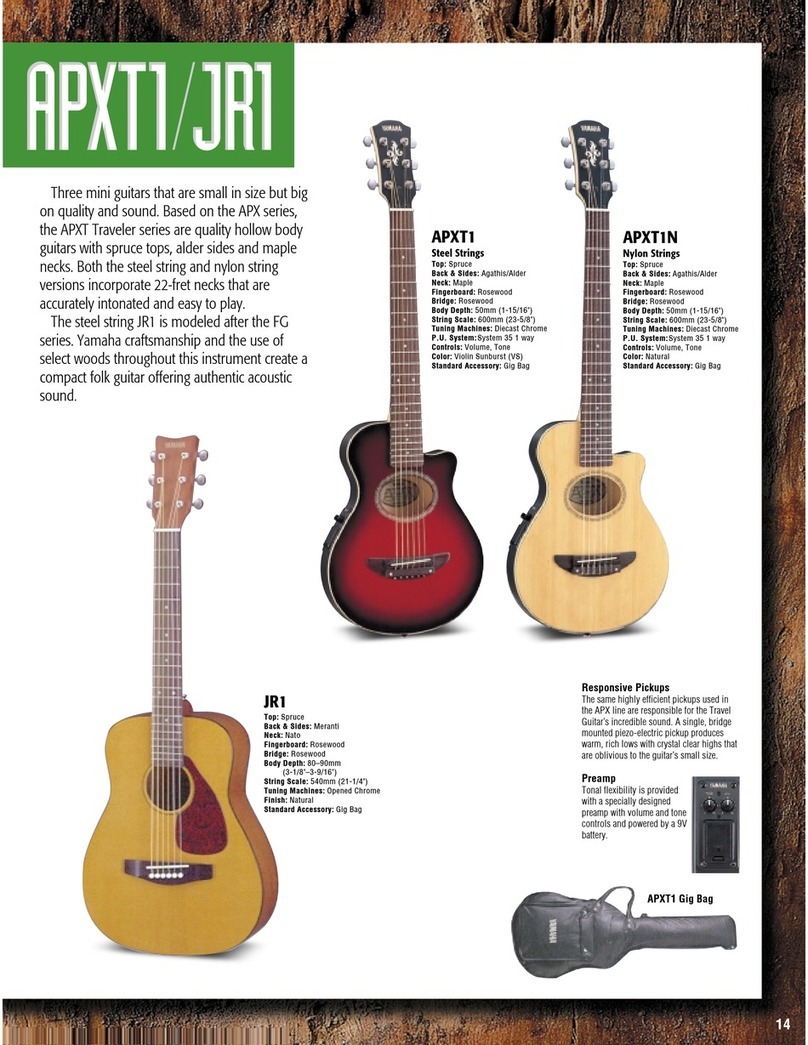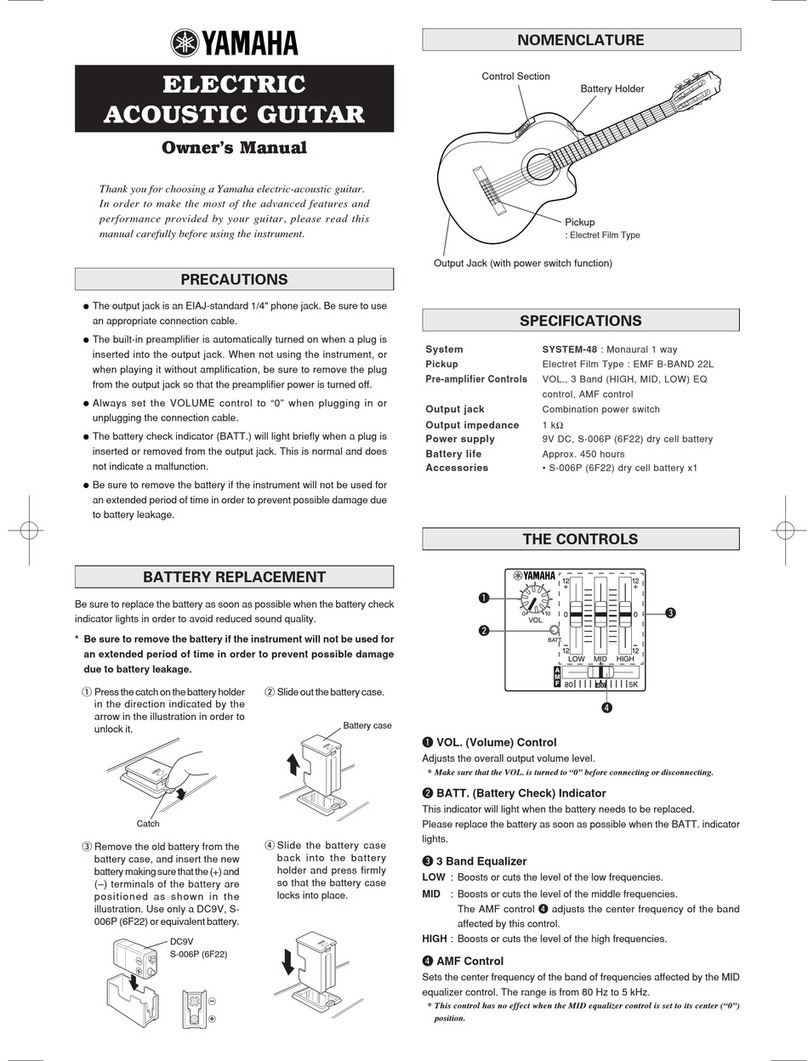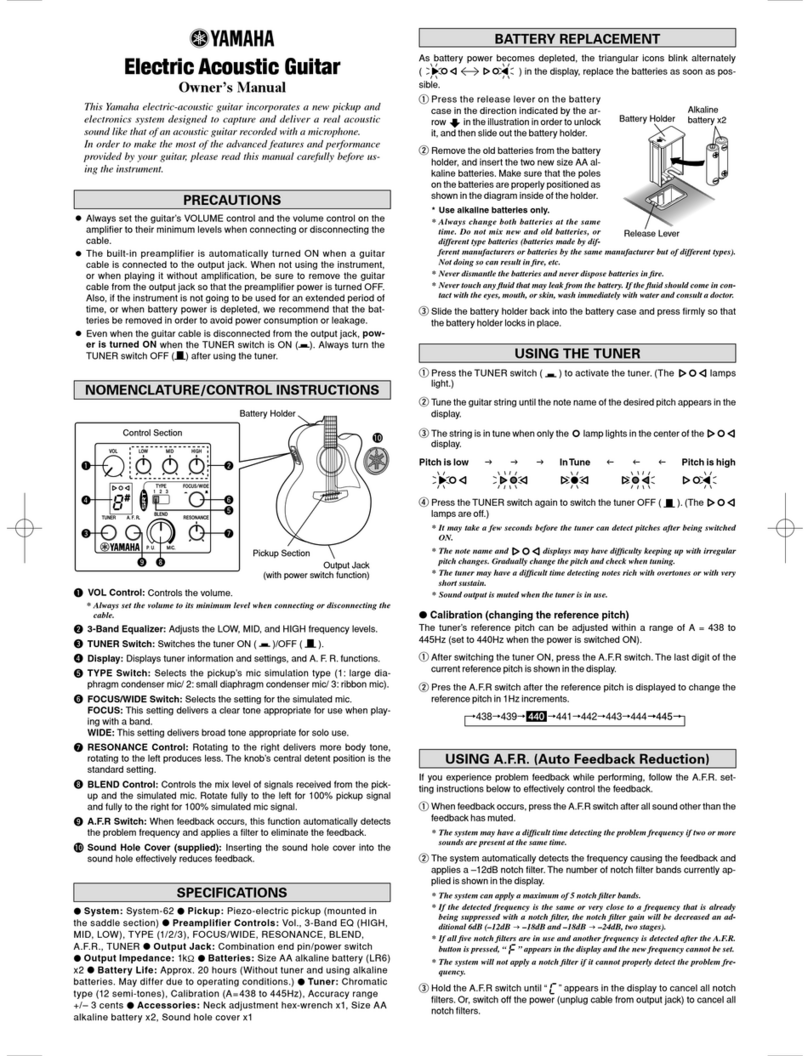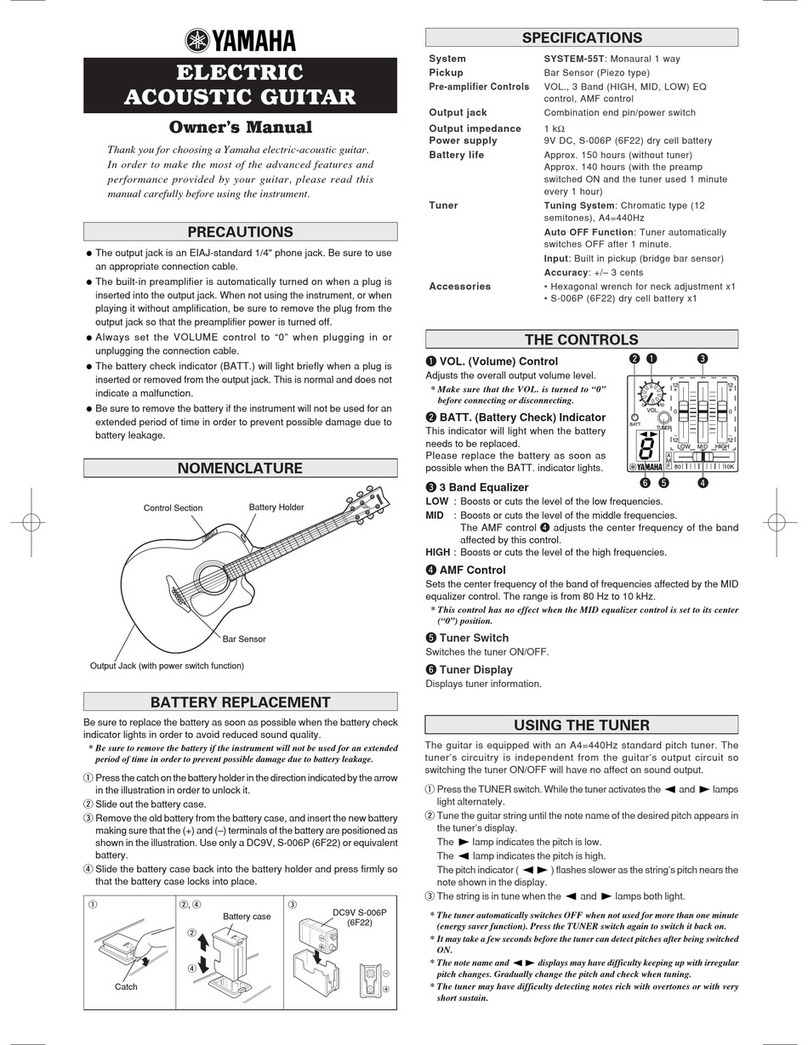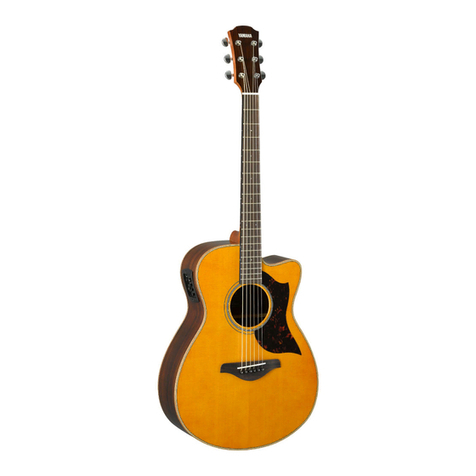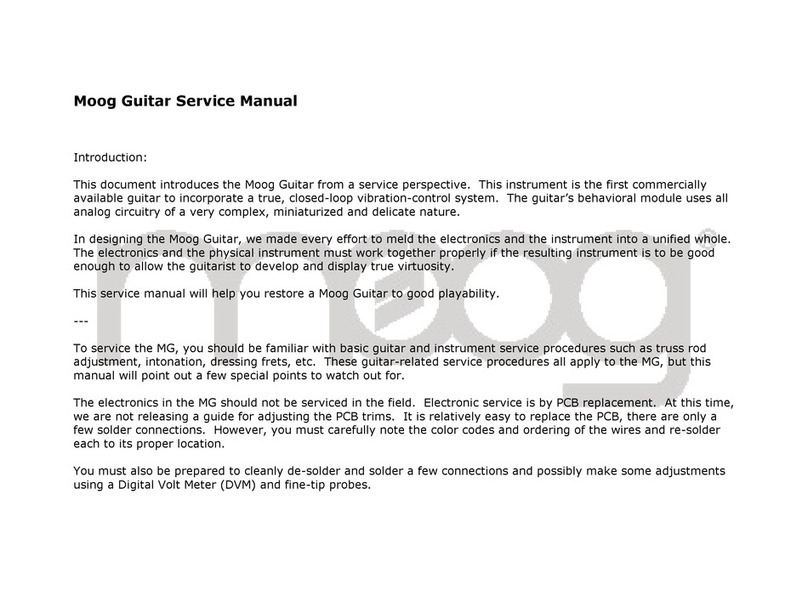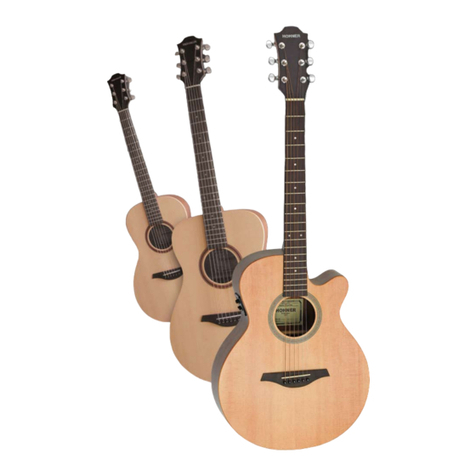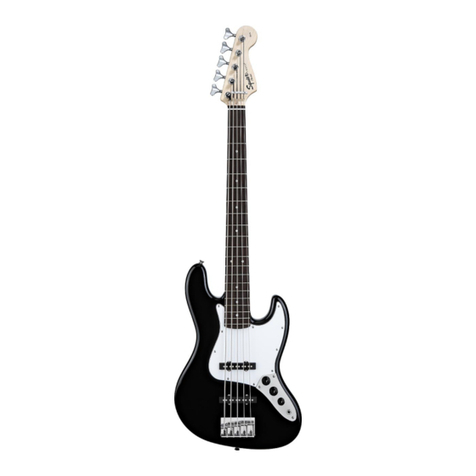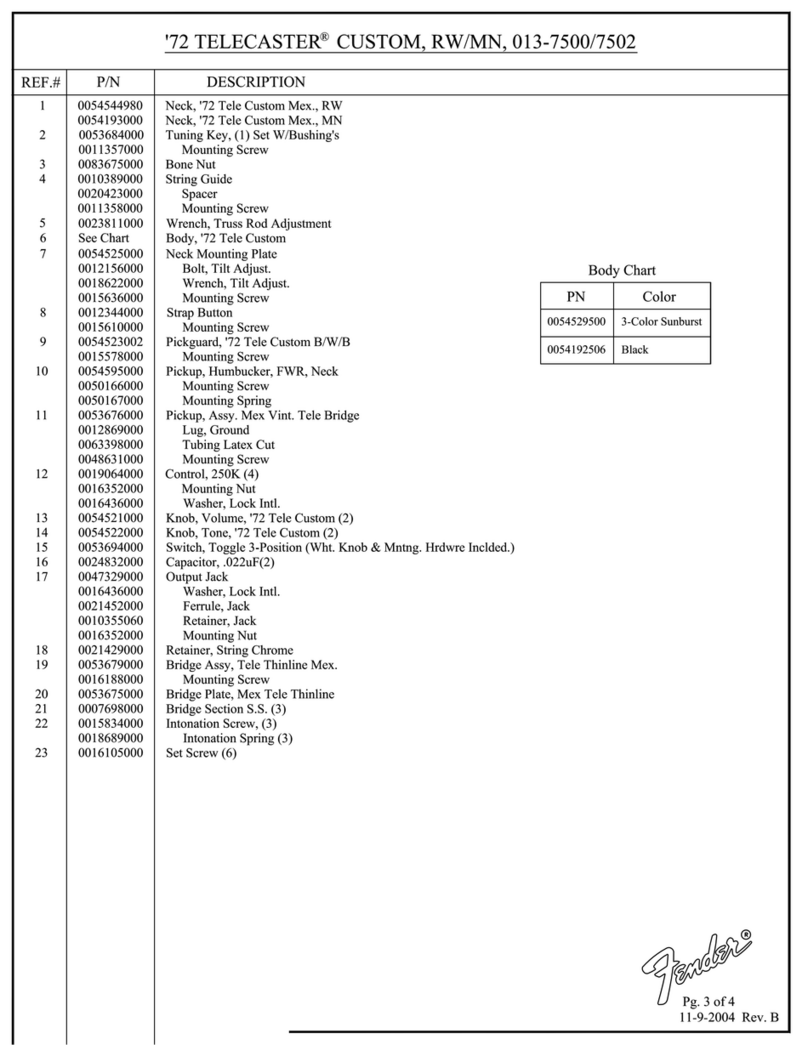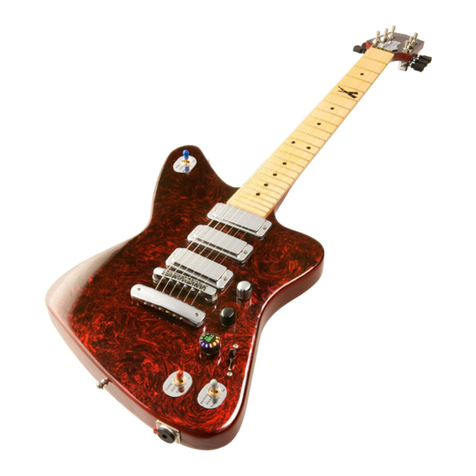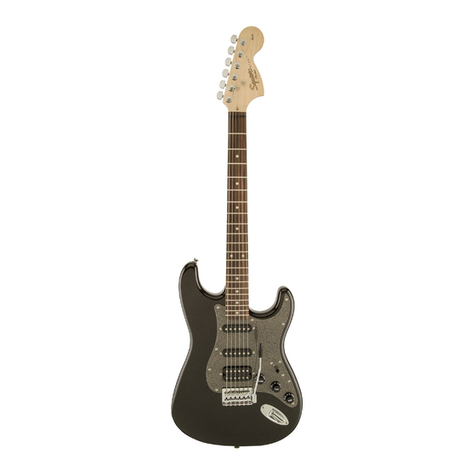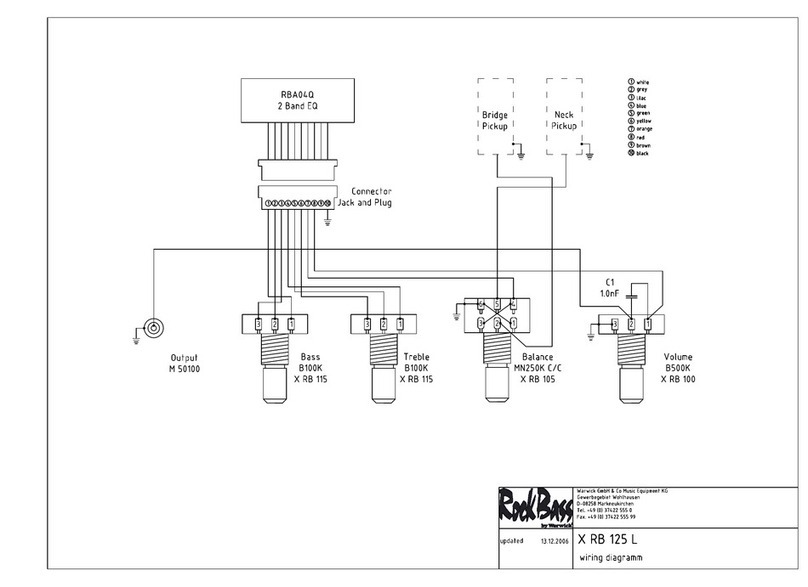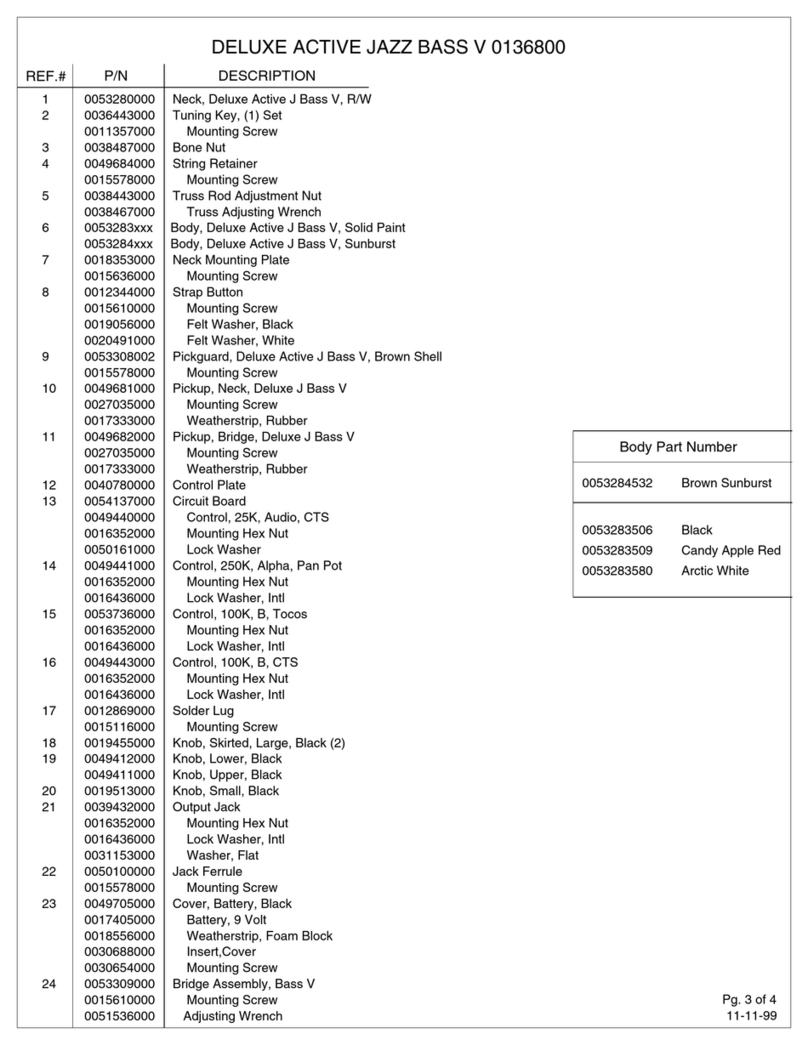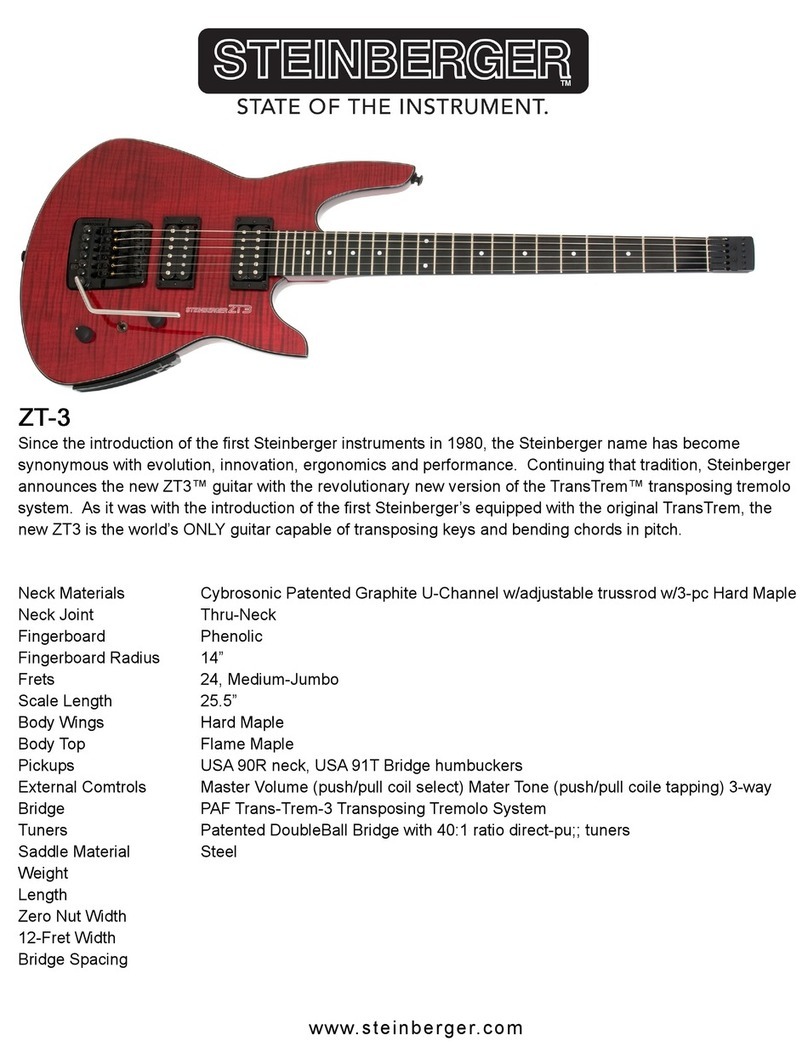
PRECAUTIONS
The output jack is an EIAJ-standard 1/4" phone jack. Be sure to use
an appropriate connection cable.
The built-in preamplifier is automatically turned on when a plug is
inserted into the output jack. When not using the instrument, or when
playing it without amplification, be sure to remove the plug from the
output jack so that the preamplifier power is turned off.
Always set the VOLUME control to “0” when plugging in or
unplugging the connection cable.
The battery check indicator (BATT.) will light briefly when a plug is
inserted or removed from the output jack. This is normal and does not
indicate a malfunction.
Be sure to remove the battery if the instrument will not be used for an
extended period of time in order to prevent possible damage due to
battery leakage.
Owner’s Manual
Thank you for choosing a Yamaha electric-acoustic guitar.
In order to make the most of the advanced features and
performance provided by your guitar, please read this
manual carefully before using the instrument.
BATTERY REPLACEMENT
Be sure to replace the battery as soon as possible when the battery check
indicator lights in order to avoid reduced sound quality.
*Be sure to remove the battery if the instrument will not be used for an
extended period of time in order to prevent possible damage due to battery
leakage.
qPress the catch on the battery holder in the direction indicated by the arrow
in the illustration in order to unlock it.
wSlide out the battery case.
eRemove the old battery from the battery case, and insert the new battery
making sure that the (+) and (–) terminals of the battery are positioned as
shown in the illustration. Use only a DC9V, S-006P (6F22) or equivalent
battery.
rSlide the battery case back into the battery holder and press firmly so
that the battery case locks into place.
ELECTRIC
ACOUSTIC GUITAR
Battery Holder
Control Section
Bar Sensor
NOMENCLATURE
Output Jack (with power switch function)
SPECIFICATIONS
System SYSTEM-58: Monaural 1 way
Pickup Bar Sensor (Piezo type)
Pre-amplifier Controls
VOL., 3 Band (HIGH, MID, LOW) EQ
control, AMF control
Output jack Combination end pin/power switch
Output impedance 1 kΩ
Power supply 9V DC, S-006P (6F22) dry cell battery
Battery life Approx. 300 hours
*When using a manganese battery.
*Varies according to operating conditions.
Accessories •
Hexagonal wrench for neck adjustment x1
• S-006P (6F22) dry cell battery x1
THE CONTROLS
qVOL. (Volume) Control
Adjusts the overall output volume level.
*Make sure that the VOL. is turned to “0” before connecting or
disconnecting.
wBATT. (Battery Check) Indicator
This indicator will light when the battery needs to be replaced.
Please replace the battery as soon as possible when the BATT. indicator
lights.
e3 Band Equalizer
LOW :Boosts or cuts the level of the low frequencies.
MID :Boosts or cuts the level of the middle frequencies.
The AMF control radjusts the center frequency of the band
affected by this control.
HIGH : Boosts or cuts the level of the high frequencies.
rAMF Control
Sets the center frequency of the band of frequencies affected by the MID
equalizer control. The range is from 80 Hz to 10 kHz.
*This control has no effect when the MID equalizer control is set to its center
(“0”) position.
Catch
DC9V S-006P
(6F22)
Battery case
q
w, re
w
r
q
e
w
r
EleAcoSystem58Indonesia 06.6.27, 9:48 AMPage 4 AdobePageMaker6.5J/PPC
